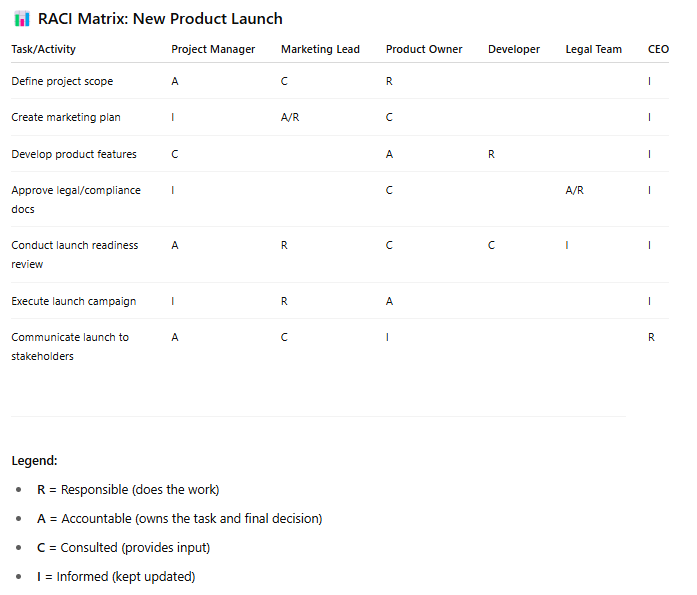

In project management, a requirements management plan is a critical document that outlines the approach, tools, and techniques to manage project requirements effectively. This plan helps ensure that project stakeholders have a clear understanding of the project’s objectives and requirements, leading to successful project delivery.
In this article, we will explore the significance of a requirements management plan and its key components.
To Begin: The Plan Scope Management Process
To understand the outputs, you must understand the Plan Scope Management process as a whole. This element of the Scope Management knowledge area is all about planning the scope for a project and how to manage it as the project goes on. During the Plan Scope Management process, project managers will set out how they want to define, validate, and manage the scope of the project.
The scope will vary from project to project, based on the requirements of shareholders like executives and customers. As the project progresses and creates outputs, those outputs are checked against the expectations and scope of the project. The scope must be closely managed so that project managers can avoid scope creeps.
Plan Scope Management Process:
- Creates a plan for defining scope, quality check, and scope management
- Outputs are: Requirements Management Plan and Scope Management Plan
- Sets the guidelines for how the scope will be defined, developed, managed, and verified
- A key part of the project management plan
So, as we’ve covered, there are two outputs to the Plan Scope Management process: Requirements Management Plan and Scope Management plan. Let’s flesh out those outputs and understand what goes into those plans.
What is the Scope Management Plan?
The PMP exam and PMP exam prep courses define Scope Management Plan as the plan that lays out the margins for the scope. The Scope Management Plan determines how to define, develop, monitor and control, and verify the scope of a project. Some examples of what goes into a Scope Management Plan include:
- Collecting customer and shareholder requirements
- Eliminating conflicting and contrasting requirements
- Tracking the delivery process of the scope agreed upon
- Verifying the project deliverables
Scope Management Plan is part of the Project Management Plan as a whole and a key input for the Develop Management Plan process. There’s a reason why the Scope Management Plan is so interwoven with the rest of the Project Management Plan.
The scope of the project essentially defines the rest of the project: the work to be done, the deadlines, the budget, the quality, and the resources. So the plan to finalize the scope management of the project is one of the most important elements
Importance of a Requirements Management Plan
A requirements management plan plays a crucial role in project management for the following reasons:
- Clear Communication: The plan facilitates clear and consistent communication between project stakeholders regarding the project’s requirements, reducing misunderstandings and ensuring everyone is aligned.
- Scope Control: By documenting and managing requirements, the plan helps control project scope, preventing scope creep and ensuring that the project stays focused on its objectives.
- Risk Mitigation: A well-defined requirements management plan helps identify potential risks associated with requirements and provides strategies for mitigating those risks.
- Change Management: The plan outlines the process for managing changes to project requirements, ensuring that changes are evaluated, approved, and implemented effectively.
- Quality Assurance: By defining requirements and their acceptance criteria, the plan helps ensure that the project delivers the expected outcomes and meets the stakeholders’ needs and expectations.
Key Components of a Requirements Management Plan
A comprehensive requirements management plan should include the following key components:
- Requirements Identification: This component describes how project requirements will be identified, documented, and categorized.
- Requirements Documentation: The plan should outline the format, structure, and attributes of the requirements documentation, ensuring consistency and clarity.
- Requirements Change Management: This component covers the process for managing changes to project requirements, including change request submission, evaluation, and approval.
- Requirements Traceability: The plan should define how requirements will be traced throughout the project lifecycle, ensuring that each requirement is addressed and fulfilled.
- Requirements Validation: This component describes the approach for validating requirements, ensuring that they are complete, accurate, and aligned with the stakeholders’ needs.
Sign-up for a 7-day free trial! Try the first two modules of Brain Sensei’s story-based PMP and CAPM Exam Prep courses and a mini practice exam and see how it all works
Conclusion
A requirements management plan is a vital component of project management, enabling clear communication, scope control, risk mitigation, change management, and quality assurance. By documenting and managing project requirements effectively, organizations can ensure that their projects deliver the desired outcomes and meet stakeholder expectations.
Project managers should develop a comprehensive requirements management plan to facilitate successful project execution and maximize project success.
Have you led projects and are looking to earn a project management certification? You might be interested in learning about how lucrative this can be. Check out these articles.
13 PMP Benefits Once You Get The PMP Certification
No experience leading projects but still want to get into project management? No problem! Check out these articles.
CAPM Certification Eligibility
What is a Certified Project Manager; How do I get PM Certifications


